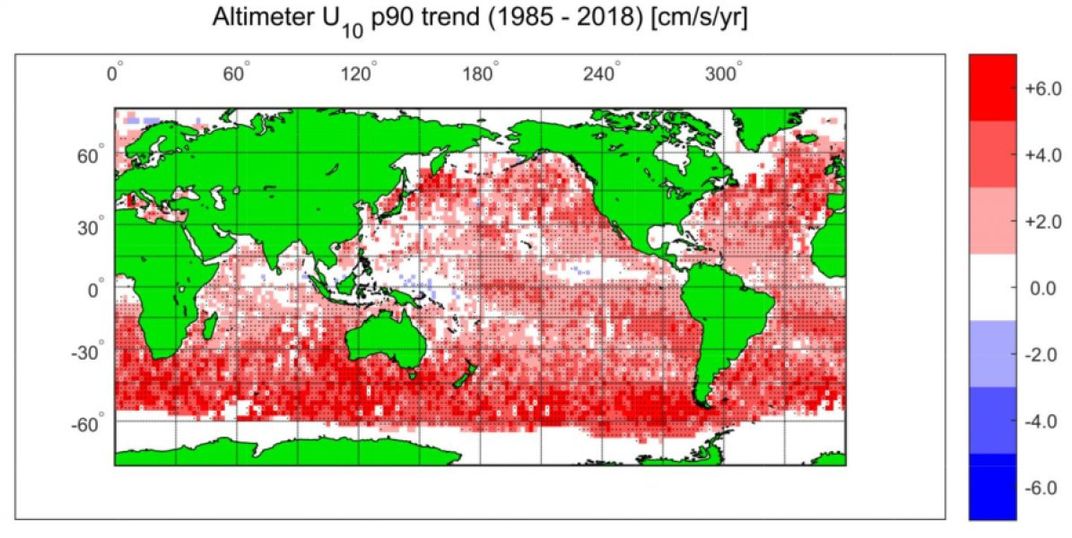Ocean Wind and Waves Have Grown Stronger Over the Last Three Decades
Decades of satellite data show changes in the ocean that could lead to more destructive storm surges and coastal erosion
/https://tf-cmsv2-smithsonianmag-media.s3.amazonaws.com/filer/75/56/75560698-2fdc-4665-b63c-8c9409f9f44a/19590678868_9b387ceca4_o.jpg)
Over the last three decades, the seas became stormier and the roughest waves got bigger, according to a new study in the journal Science.
To get a handle on the oceans, researchers gathered 4 billion observations of wind speed and wave height collected between 1985 and 2018 by 31 satellites. The data was cross-checked with 80 ocean buoys that collect similar data. Colin Barras at Science magazine, reports that on average, the wind intensity around the globe has increased between one and two centimeters per second per year. And windier seas have resulted in an increase in average wave height as well.

According to the research, the Southern Ocean surrounding Antarctica has seen the most dramatic changes. Over 30 years, extreme wind speeds have increased by 5 feet per second or 3.3 miles per hour, an 8 percent jump. Extreme wave height has increased a little less than a foot, or 5 percent.
“Although increases of 5 percent for waves and 8 percent for winds may not seem like much, if sustained into the future such changes to our climate will have major impacts,” co-author Ian Young of the University of Melbourne says in a press release.
Young tells Kashmira Gander at Newsweek that it’s likely these shifts are linked to ongoing climate change. Coupled with sea level rise, a well-established effect of climate change, amplified wind and waves could prove to be quite dangerous.
“Changes in winds and waves will further enhance the damage sea level rise will cause. The results, however, show that the climate is linked in many ways and that a changing climate system is likely to have many cascading impacts,” he says.
Peter Ruggiero, a geophysicist at Oregon State University not involved in the study, tells Science’s Barras that a link with climate change is likely, and points to other studies that show increasing temperatures are bumping up wind speed and wave height in the tropics. According to that study, which looked at satellite data from 1985 to 2008, wave power has increased 0.4 percent per year since 1948, and is linked to warming waters in the upper layers of the ocean.
But finding what caused these increases is more complicated that attributing them to climate change alone, explains Paulo Ceppi, a climate scientist at Imperial College London not involved in the study. For example, it’s possible that heavy impact on the Southern Ocean is partially driven by the hole in the ozone layer, which lets in more solar radiation over Antarctica.
“It’s a bit difficult to extrapolate these findings to the wider picture,” Ceppi tells Hannah Devlin at The Guardian. “During 30-year periods you can still have pretty significant natural variations in winds.”